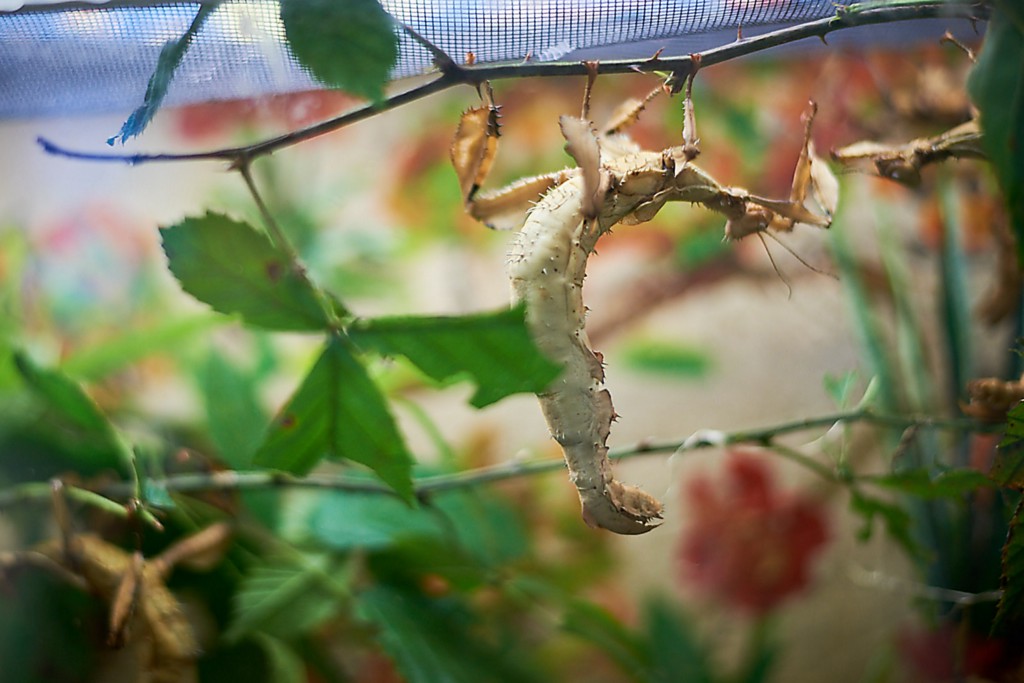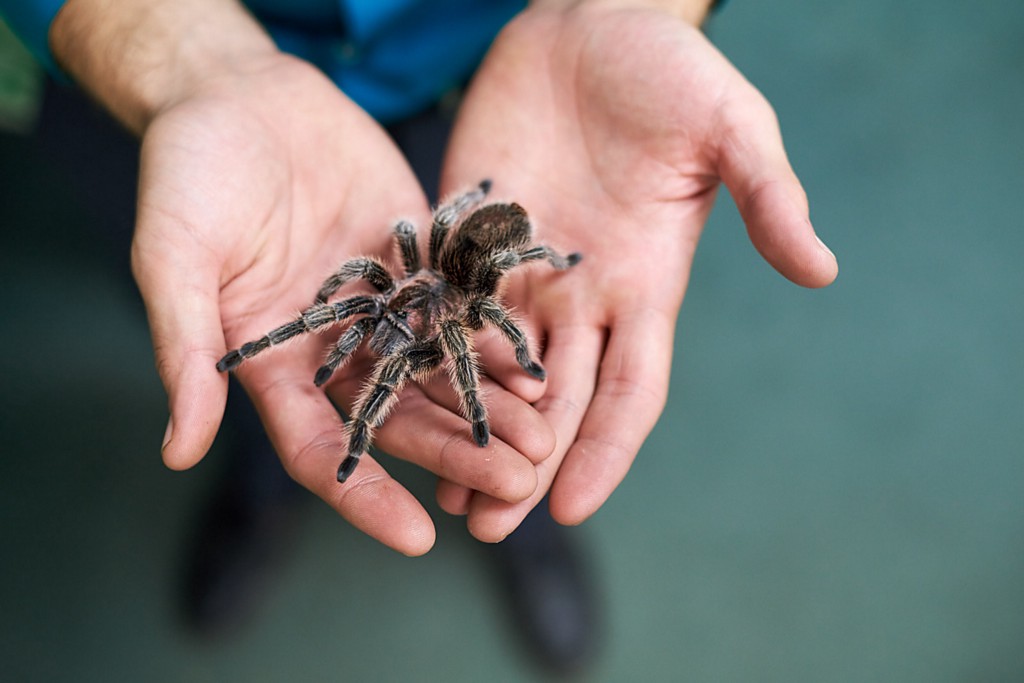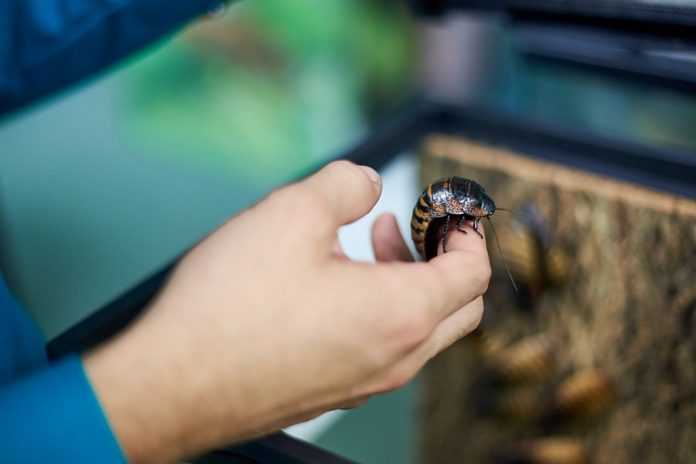MARIA YOUNG / TIMES PHOTO
An often overlooked cultural attraction in Northeast Philadelphia is in the midst of a metamorphosis befitting the regal monarch butterfly.
The Insectarium in Holmesburg lies relatively dormant now. But come January, it will emerge from its cocoon, unveiling what its director purports will be one of the largest year-round indoor butterfly pavilions in North America. The 7,000-square-foot greenhouse will act as a tropical rainforest and become the centerpiece of sweeping renovations to a former American Legion hall and Nash automobile dealership that has served for the last 25 years as the one-of-a-kind bug museum.
“It will be lush, green and flowering all year round. It’s been massively popular everywhere in the U.S. that it’s been done,” said Dr. John Cambridge, a 27-year-old entomologist and Arlington, Va., native who has partnered with Insectarium founder Steve Kanya to reimagine the museum.
The three-story building at 8046 Frankford Ave. is surrounded by a private nightclub, an auto tag shop, a dollar store, a cell phone store and a Pizza Hut. It’s in the heart of the old Holmesburg business district. The majestic masonry facade still features a stone engraving of the American Legion crest, although the local Post 178 relocated to a smaller building across the street a few decades after its 1929 founding. Cambridge says that the building’s historic character will be left intact.
Passers-by may also be misled a bit by the fading yellow Steve’s Bug-Off sign that still hangs over the front door. Kanya, a retired cop, used to operate his exterminating business on the first floor. In fact, that’s how the founder came up with the idea for a bug museum in the first place. Kanya discovered that folks on the avenue seemed attracted to the odd specimens he would place in his storefront window.
Moving forward, the entire building will be dedicated to the exploration and celebration of the insect world. With the addition of the butterfly pavilion, the facility will have about 24,000 square feet of exhibition and administrative space. Cambridge declined to disclose the cost. Private investors are underwriting the project, while corporate sponsorship offers are sought.
Those who may have visited the old Insectarium will have plenty of new exhibits to see come the new year. The makeover has been more than eight months in development already. Before it began, the museum had been drawing about 15,000 visitors annually.
“We’re looking to take it a step further and place more focus on the museum,” Cambridge said. “It wasn’t staying current, so back in February we decided to do ground-up renovations. We’ve brought a lot of new content in.”
The director, who earned a bachelor’s degree, a master’s in public health and a Ph.D from Rutgers, wants to emphasize education and interaction in addition to the spectacle of creepy crawlers in captivity. Wall murals explain insect body parts and their purposes, as well as concepts like morphological plasticity. That’s the term for how different bugs form specialized body parts. Some are better suited for running, jumping, digging or grasping
The murals also explain digestive, respiratory and circulatory systems, along with reproductive cycles. Visitors should know that insects represent more than 70 percent of the known organisms on Earth. The displays are designed to excite kindergarten children while appealing to graduate-level students.
“We’re really trying to make a cohesive, quick narrative,” Cambridge said. “There’s a lot to grab their attention, but we also want to be involved in forward learning. We want them to be the first place (school children) learn about genetics.”
There will be flexible exhibit space that can be modified to suit important environmental or public health issues of the time. The museum already has a display about mosquito-borne diseases on loan from Yale’s Peabody Museum of Natural History. Zika and West Nile are two examples. Emerald ash borer infestation of the city’s ash trees is another timely hyper-local environmental concern.
From an interactive standpoint, young visitors will be able to scale a climbing wall and enter a transparent polycarbonate tunnel to be surrounded by iguanas as they feed on their insect prey. Small visitors will also be able to walk into a simulated tree to see a live working colony of honey bees.
“Instead of being outside and looking in, this lets them inside,” Cambridge said. “We’ve also brought in a lot of stuff that they can touch. Everything is tactile.”
The live bugs on display range from the common cockroach to the giant African millipede and black widow spiders. Visitors will be able to handle a palm-sized rose-haired tarantula, if their nerves are up to it.
The butterfly pavilion will be the piece de resistance of the redesign. Although the museum’s pre-existing zoning allowed for the addition without the need for variances or special permits, the museum must adhere to strict federal regulations governing insect containment. The facility cannot include plants that the butterflies will eat or use to lay their eggs. Licensed breeders will supply the insects, who will be delivered by the thousands while in their pupa stage, then released into the pavilion as they mature.
The room will include a three-foot bed of soil and wall-to-wall tropical plants. It will be naturally lit from a transparent ceiling with supplementary LED lights. The temperature will stay between 77 and 90 degrees. The pavilion will dwarf similar exhibits at Hershey Gardens (2,000 square feet) and the Academy of Natural Sciences (1,200 square feet). And it will remain affordable. General admission will cost $15.
“We’re trying to make this a regional destination that will help revitalize the area,” Cambridge said.
The revitalization theme will continue beyond the Insectarium’s four walls. Earlier this year, as Cambridge and Kanya began contemplating their grand butterfly project, a group of business owners in nearby Mayfair were looking for ways to promote “greening” along the Frankford Avenue business corridor. They wanted to use large flower boxes on the sidewalk for public plantings. Kanya recommended using milkweed to help sustain the dying monarch butterfly population.
“The two projects came together at a good time,” said Mia Hylan, president of the Mayfair Business Association.
The eastern monarch, which habitats most of the United States east of the Rocky Mountains for most of the year, has experienced a more than 95 percent population decline since ’96. The species is known for its broad orange and black wings and serves as a vital pollinator. Milkweed is its exclusive host, which works fine for the Mayfair businesses.
“There’s actually a little flower on it and it’s self-seeding. It blooms throughout the summer,” Hylan said.
The business association is working with a non-profit set up by Cambridge to facilitate milkweed plantings in Mayfair hopefully elsewhere in the Northeast. Hylan hopes to employ Lincoln High School horticulture students and other community volunteers for the plantings in the coming weeks and next spring. For information about the effort, visit mayfairmonarch.org or send an email to [email protected]. ••

MARIA YOUNG / TIMES PHOTO

The butterfly effect: Come January, the Insectarium will be home to one of the largest year-round indoor butterfly pavilions in North America. The museum is home to a rose-haired tarantula (above) among many other insects. MARIA YOUNG / TIMES PHOTO





